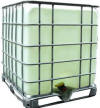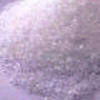| Mubychem Group, established in 1976, is the pioneer manufacturer of Industrial Grade Urea, Pharmaceutical, Fragrance & Flavor chemicals in India. Mubychem Group has several manufacturing facilities spread across Gujarat and Mumbai India and world wide contacts and toll manufacturers. We are exporting globally to countries like USA, Canada, Europe, UAE, South Africa, Tanzania, Kenya, Egypt, Nigeria, Uganda, Turkey, Mexico, Brazil, Chile, Argentina, Dubai etc. |
The participating units have one or more accreditations like FDA - GMP approval; ISO-9001 Certified; "REACH"registered; ISO-22000; Kosher Certified;Halal Certified; HACCP. We offer Pure & IP BP USP FCC Food Grade ACS AR Analytical Reagent Grades of Chemicals | |







Industrial Urea Manufacturers, MSDS Sheet
Urea USP BP IP FCC Food grade Manufacturers
Urea MSDS Sheet, Material Safety Data Sheet
1. Product Identification
Synonyms: Carbamide resin; Isourea; Carbonyl diamide; Carbonyldiamine
CAS No.: 57-13-6
Molecular Weight: 60.06
Chemical Formula: (NH2)2CO
Chemical Family: Amides
2. Composition/Information on Ingredients
Ingredient: Urea
CAS No.: 57-13-6
Percent: 99 - 100%
Hazardous: Yes
3. Hazards Identification
Emergency Overview
WARNING! HARMFUL IF SWALLOWED OR INHALED. CAUSES IRRITATION TO SKIN, EYES AND RESPIRATORY TRACT.
Lab Protective Equip: GOGGLES & SHIELD; LAB COAT & APRON; VENT HOOD; PROPER GLOVES
Storage Color Code: Green (General Storage)
Potential Health Effects
Eyes: Contact may cause eye irritation including stinging, watering and redness.
Skin: Contact may cause irritation including redness, itching and pain. No harmful effects from skin absorption.
Inhalation (Breathing): Urea dust may cause irritation of the nose, throat, and respiratory tract.
Ingestion (Swallowing): Low degree of toxicity by ingestion. May cause irritation of the digestive tract if ingested. Nausea and vomiting may occur after exposure to large volumes.
Signs and Symptoms: Effects of overexposure to Urea may include irritation of the nose, throat and digestive tract, nausea, vomiting, coughing and shortness of breath.
Cancer: Inadequate data available.
4. First Aid Measures
Inhalation: Remove to fresh air. If not breathing, give artificial respiration. If breathing is difficult, give oxygen. Get medical attention.Ingestion: Induce vomiting immediately as directed by medical personnel. Never give anything by mouth to an unconscious person. Get medical attention.
Skin Contact: Wash affected areas with soap and water for at least 15 minutes while removing contaminated clothing and shoes. Wash clothing before reuse. Thoroughly clean shoes before reuse. Get medical attention if symptoms occur.
Eye Contact: Immediately flush eyes with plenty of water for at least 15 minutes, lifting lower and upper eyelids occasionally. Get medical attention immediately.
5. Fire Fighting Measures
Fire: Urea is not considered to be a fire hazard.Explosion: Reactions with incompatibles may pose an explosion hazard.
Fire Extinguishing Media: Use any means suitable for extinguishing surrounding fire.
Special Information: In the event of a fire, wear full protective clothing and NIOSH-approved self-contained breathing apparatus with full face piece operated in the pressure demand or other positive pressure mode.
6. Accidental Release Measures
Ventilate area of leak or spill of Urea. Wear appropriate personal protective equipment as specified in Section 8. Spills: Sweep up and containerize for reclamation or disposal. Vacuuming or wet sweeping may be used to avoid dust dispersal.
7. Handling and Storage
Keep dry. Urea will absorb moisture from air. If storage piles become wet, surrounding floor may be slippery. Reacts with hypo chlorites to form nitrogen trichloride, which explodes spontaneously in air. Reacts with nitric acid to form urea nitrate that decomposes explosively when heated.. Store Urea in a tightly closed container. Protect container from physical damage. Containers of Urea may be hazardous when empty.
8. Exposure Controls/Personal Protection
Airborne Exposure Limits:-AIHA Workplace Environmental Exposure Limit (WEEL):
10 mg/m3, 8-hour TWA
Ventilation System:
A system of local and/or general exhaust is recommended to keep employee exposures below the Airborne Exposure Limits. Local exhaust ventilation is generally preferred because it can control the emissions of the contaminant at its source, preventing dispersion of it into the general work area. Please refer to the ACGIH document, Industrial Ventilation, A Manual of Recommended Practices, most recent edition, for details.
Personal Respirators (NIOSH Approved):
If the Urea exposure limit is exceeded and engineering controls are not feasible, a half face piece particulate respirator (NIOSH type N95 or better filters) may be worn for up to ten times the exposure limit or the maximum use concentration specified by the appropriate regulatory agency or respirator supplier, whichever is lowest.. A full-face piece particulate respirator (NIOSH type N100 filters) may be worn up to 50 times the exposure limit, or the maximum use concentration specified by the appropriate regulatory agency, or respirator supplier, whichever is lowest. If oil particles (e.g. lubricants, cutting fluids, glycerin, etc.) are present, use a NIOSH type R or P filter. For emergencies or instances where the exposure levels are not known, use a full-face piece positive-pressure, air-supplied respirator. WARNING: Air-purifying respirators do not protect workers in oxygen-deficient atmospheres. If heat is involved, an ammonia/methylamine, dust/mist cartridge may be necessary.
Skin Protection:
Wear protective gloves and clean body-covering clothing.
Eye Protection:
Use chemical safety goggles and/or full face shield where dusting or splashing of solutions is possible. Maintain eye wash fountain and quick-drench facilities in work area.
9. Physical and Chemical Properties
Appearance: Urea is white crystals or white powder.
Odor: Develops odor of ammonia.
Solubility: Very soluble in water.
Specific Gravity: 1.32 @ 20C/4C
pH: 7.2 (10% in water)
% Volatiles by volume @ 21C (70F): 0
Boiling Point: Decomposes.
Melting Point: 132 - 135C (270 - 275F)
10. Stability and Reactivity
Stability: Urea is stable under ordinary conditions of use and storage.
Hazardous Decomposition Products: Urea decomposes upon heating and can form products including ammonia, oxides of nitrogen, cyanuric acid, cyanic acid, biuret, carbon dioxide.
Hazardous Polymerization: Will not occur.
Incompatibilities: Urea reacts with calcium hypochlorite or sodium hypochlorite to form the explosive nitrogen trichloride. It is incompatible with sodium nitrite, gallium perchlorate, strong oxidizing agents (permanganate, dichromate, nitrate, chlorine), phosphorus pentachloride, nitrosyl perchlorate, titanium tetrachloride and chromyl chloride.
11. Toxicological Information
Urea: Oral rat LD50: 8471 mg/kg. Investigated as a tumorigen, mutagen, reproductive effector.
--------\Cancer Lists\ -----------------------------------------------------
---------------- ---NTP Carcinogen--
Ingredient ----- Known - Anticipated - IARC Category
Urea (57-13-6) -
No ------- No ---------- None
12. Ecological Information
Environmental Fate: When released to soil, Urea will hydrolyze into ammonium in a matter of days to several weeks. When released into the soil, this material may leach into groundwater. When released into water, this material may biodegrade to a moderate extent. When released into water, this material is not expected to evaporate significantly. Urea has an experimentally-determined bio-concentration factor (BCF) of less than 100. This material is not expected to significantly bio-accumulate. When released into the air, this material is expected to be readily degraded by reaction with photo chemically produced hydroxyl radicals. When released into the air, Urea is expected to have a half-life of less than 1 day.
Environmental Toxicity: Urea can be toxic to domestic animals and has caused poisonings when it was applied unevenly on pastures as a fertilizer. Large amounts of urea can damage plant seedlings and inhibit germination. At high concentrations, urea can be toxic to aquatic life.
13. Disposal Considerations
Urea is not considered a hazardous waste under Federal Hazardous Waste Regulations 40 CFR 261. Follow standard disposal procedures. Dispose of container of Urea and unused contents in accordance with legal requirements.
14. Transport Information
Not regulated.15. Regulatory Information
--------\Chemical Inventory Status - Part 1\ -------------------
Ingredient ------ TSCA EC Japan Australia
----------------- ---- --- ----- ---------
Urea (57-13-6) -- Yes Yes Yes Yes
--------\Chemical Inventory Status - Part 2\ ------------------
------------------------ --Canada--
Ingredient ------ Korea DSL
NDSL Phil.
----------------- ----- --- ---- -----
Urea (57-13-6) -- Yes Yes
No Yes
--------\Federal, State & International
Regulations - Part 1\--
----------------- -SARA 302- ------SARA 313------
Ingredient ------ RQ TPQ List Chemical Catg.
-----------------
--- ----- ---- --------------
Urea (57-13-6) -- No No No No
--------\Federal, State & International
Regulations - Part 2\--
------------------------- -RCRA- -TSCA-
Ingredient ------ CERCLA 261.33 8(d)
----------------- ------ ------ ----
Urea (57-13-6) -- No -----
No --- No
Chemical Weapons Convention: No; TSCA 12(b): No; CDTA: No
SARA 311/312: Acute: Yes; Chronic: Yes; Fire: No; Pressure: No; Reactivity: No; (Pure / Solid)
Australian Hazchem Code: None allocated.
Poison Schedule: None allocated.
USA Federal and State Regulations:
Minnesota: Urea TSCA 8(b) inventory: Urea
OSHA: Hazardous by definition of Hazard Communication Standard (29 CFR 1910.1200). EINECS: This product is on the European Inventory of Existing Commercial Chemical Substances.
WHMIS (Canada): Not controlled under WHMIS (Canada).
DSCL (EEC):
R36/38- Irritating to eyes and skin. R40- Possible risks of irreversible effects. S24/25- Avoid contact with skin and eyes.
HMIS (U.S.A.):
Health Hazard: 2
Fire Hazard: 1
Reactivity: 0
Personal Protection: E
National Fire Protection Association (U.S.A.):
Health: 2
Flammability: 1
Reactivity: 0
Specific hazard:
Protective Equipment:
Gloves. Lab coat. Dust respirator. Be sure to use an approved/certified respirator or equivalent. Splash goggles.
16. Other Information
Disclaimer:
******************************
Our company provides this Urea MSDS information sheet contained herein in good faith but makes no representation as to its comprehensiveness or accuracy. This Urea MSDS sheet is intended only as a guide to the appropriate precautionary handling of the material by a properly trained person using this product. Individuals receiving the information must exercise their independent judgment in determining its appropriateness for a particular purpose.
******************************
Industrial Grade Urea Manufacturers at:
MUBYCHEM GROUP
CHINCHBUNDER, MUMBAI 400009, INDIA
TEL: (OFFICE) 91-22-23774610, 91-22- 23723564. 91-22-23728264
e-mail: anmol@pcmenergy.com

Copyright and Usual Disclaimer is Applicable.
Global or International Urea BP IP USP FCC Suppliers, Exporters, Importers, Manufacturers
Calcium Phosphate Tribasic MSDS
If I give you “My Word” Nobody can undo it.
If I sign an “Agreement” my Lawyer will undo it
Perfection is made up of small thing but it is not small.

